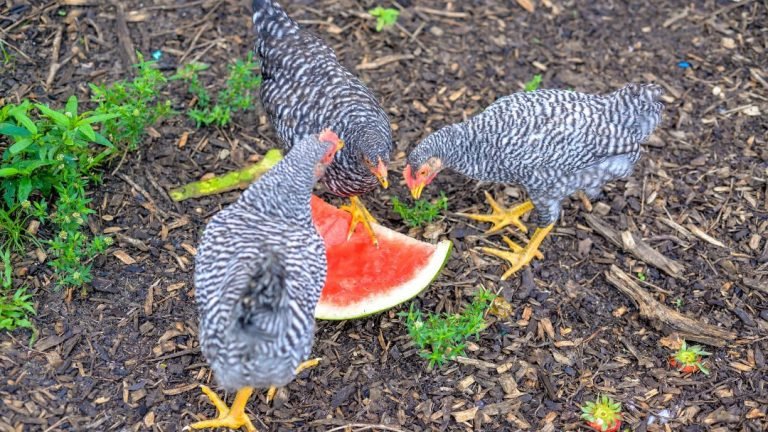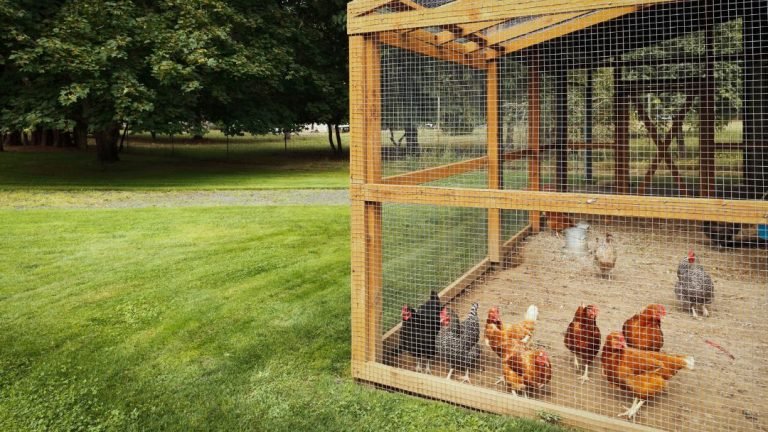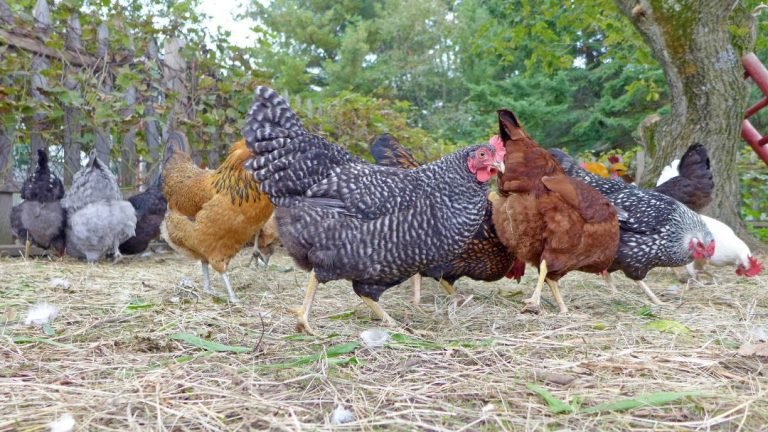Pine shavings in a chicken coop should be changed approximately every two to three weeks. Maintaining clean bedding is crucial for the health and well-being of the chickens, as it helps control odors, bacteria growth, and pests, while also preventing the buildup of ammonia fumes.
By regularly refreshing the bedding, you create a clean and comfortable environment that promotes good hygiene and reduces the risk of respiratory issues and infections for the chickens. Keeping a consistent schedule for changing pine shavings ensures that the coop remains a clean and safe space for your feathered friends.
Why Pine Shavings Are Essential For A Healthy Chicken Coop
Pine shavings play a crucial role in maintaining a healthy chicken coop. Regularly changing the pine shavings helps to ensure cleanliness and prevent the build-up of bacteria and odors, keeping your chickens happy and healthy.
Benefits Of Using Pine Shavings For Chicken Coop Bedding
When it comes to maintaining a healthy chicken coop, using pine shavings as bedding offers numerous advantages. Take a look at the benefits of incorporating pine shavings in your coop:
- Absorbency: Pine shavings have excellent absorbent properties, which helps to keep the chicken coop clean and dry. They quickly absorb moisture and odors, ensuring a pleasant and hygienic environment for your feathered friends.
- Insulation: The natural insulation properties of pine shavings provide comfort and protection to your chickens. These shavings create a warm and cozy bedding option, especially during colder months.
- Easy to Clean: Pine shavings make the cleaning process a breeze. They form clumps when wet, making it easy to remove soiled bedding and maintain cleanliness in the coop.
- Dust Control: Unlike some other bedding options, pine shavings have low levels of dust. This is beneficial for the respiratory health of both chickens and their caretakers.
- Natural Scent: The pleasant aroma of pine shavings helps to mask any undesirable odors, leaving your chicken coop smelling fresh and clean.
- Pest Prevention: Pine shavings possess natural properties that help repel pests and insects. This acts as a deterrent, reducing the risk of infestations in your coop.
By incorporating pine shavings in your chicken coop bedding, you can ensure a healthy and comfortable environment for your flock while also making it easier for you to maintain cleanliness and hygiene.

Factors To Consider When Deciding How Often To Change Pine Shavings
When determining how often to change pine shavings in a chicken coop, several factors should be considered, including the number of chickens, coop size, and local climate. Regularly monitoring the shavings for cleanliness and odor can help ensure a healthy and comfortable environment for your flock.
Size and number of chickens in the coop:
- Coop size: A larger coop can generally accommodate more pine shavings, allowing for a longer period between changes.
- Number of chickens: More chickens in a smaller space will result in a faster accumulation of waste, requiring more frequent pine shavings changes.
Climate and weather conditions:
- Humidity: Higher humidity levels can increase moisture in the coop, leading to a quicker breakdown of pine shavings. This may require more frequent changes, especially in humid environments.
- Temperature: Warmer temperatures can accelerate decomposition and odor in the coop. If you live in a hot climate, you may need to change the pine shavings more frequently to maintain cleanliness and mitigate odors.
Frequency of coop cleaning routines:
- Cleaning schedule: The more frequently you clean the coop, the less often you may need to change the pine shavings. Regular removal of droppings and soiled bedding can help extend the lifespan of the pine shavings.
- Sanitation practices: Proper sanitation, such as disinfecting the coop and nesting boxes, can help reduce odors and bacterial growth. Implementing good sanitation practices can also extend the lifespan of your pine shavings.
Remember, every chicken coop is unique, and factors such as coop size, number of chickens, climate, and cleaning routines will vary from one situation to another. Observing the condition of the pine shavings and conducting regular checks for odors and moisture can help you determine how often to change them.
Signs That Indicate It’s Time To Change Pine Shavings
Keeping clean bedding in your chicken coop is essential for maintaining the health and well-being of your feathered friends. As pine shavings are commonly used as bedding material, it’s important to know when to change them. Here are some signs that indicate it’s time to freshen up the bedding:
Foul Odor In The Coop
- Unpleasant smells wafting from the coop are a clear indication that the pine shavings need to be changed.
- A pungent odor could be a sign of accumulated droppings and moisture in the bedding, which can be harmful to the chickens’ respiratory health.
Presence Of Excessive Moisture Or Ammonia Levels
- If you notice excessive moisture in the pine shavings, it’s time for a change. Damp bedding can promote the growth of bacteria and fungi that can cause diseases.
- High ammonia levels can also be detected by a strong, eye-watering smell. Ammonia is released from chicken droppings and can irritate the chickens’ respiratory systems if not properly managed.
Visible Dirt Or Debris In The Bedding
- Over time, chicken coop bedding accumulates dirt, feathers, and other debris that may not be suitable for the chickens.
- If you see visible dirt or debris in the bedding, it’s a sign that it’s time to remove the old shavings and replace them with fresh ones.
Remember, maintaining good hygiene in the chicken coop ensures a healthy environment for your feathered friends. By keeping an eye out for these signs, you can ensure that your chickens have clean and comfortable bedding, promoting their overall well-being.
Recommended Frequency For Changing Pine Shavings In Chicken Coop
Maintaining a clean and healthy environment is crucial for the well-being of your chickens. One important aspect of chicken coop maintenance is regularly changing the pine shavings used as bedding. But how often should you change them? Let’s explore some general guidelines, adjustments to consider based on specific circumstances and environmental factors, regular cleaning practices, and tips for proper disposal of used pine shavings.
General Guidelines For Changing Pine Shavings Based On Coop Size And Chicken Population
- For small coops with a few chickens, it is generally recommended to change the pine shavings every 2-3 months.
- In medium-sized coops with a moderate chicken population, changing the bedding every 1-2 months is usually sufficient.
- Larger coops with a higher number of chickens may require more frequent bedding changes, approximately every 1-2 weeks.
It’s important to remember that these are general guidelines, and the specific conditions of your coop may vary. Monitoring the cleanliness of the shavings and the overall odor within the coop will help determine if more frequent changes are necessary.
Adjustments To Consider Based On Specific Circumstances And Environmental Factors
- If you notice a strong ammonia smell or excessive moisture in the coop, it may be necessary to change the pine shavings more frequently, regardless of the coop size or chicken population.
- In extremely hot and humid climates, where moisture buildup is more common, consider changing the bedding more frequently to prevent bacterial growth and keep the coop dry.
- Coops with younger chicks or hens that are molting may require more frequent changes to maintain cleanliness and hygiene.
Regularly assessing the condition of the bedding, observing the chickens’ behavior, and using your judgment will help you determine if adjustments to the recommended frequency are necessary.
Regular Cleaning Practices To Maintain Clean Pine Shavings
- In addition to changing the pine shavings, it is essential to regularly clean the coop by removing droppings, feathers, and any debris.
- Spot cleaning on a daily basis, particularly in areas where droppings accumulate, will help prevent the bedding from becoming soiled quickly.
- Maintaining proper ventilation in the coop will assist in reducing moisture buildup and odors, ultimately extending the life of the pine shavings.
By incorporating these cleaning practices into your routine, you can ensure that the pine shavings remain clean and fresh, and provide a comfortable environment for your chickens.
Tips For Proper Disposal Of Used Pine Shavings
- Used pine shavings can be composted to make nutrient-rich fertilizers for plants. Avoid using the compost on edible crops unless you are certain there are no harmful pathogens or parasites.
- If composting is not an option, dispose of the used shavings in a responsible manner, following local waste management guidelines.
- Avoid discarding the used shavings in sensitive areas such as water bodies or natural habitats to prevent environmental contamination.
Remember to consider the environmental impact and choose the most suitable disposal method for your used pine shavings.
With these guidelines, adjustments, cleaning practices, and disposal tips in mind, you can effectively maintain a clean and comfortable environment for your chickens by changing the pine shavings at the recommended frequency.
Conclusion
Regularly changing pine shavings in your chicken coop is essential for maintaining a clean and healthy environment for your flock. By refreshing the bedding every few weeks or whenever it becomes soiled or odorous, you can help prevent the buildup of bacteria and pathogens that can lead to disease.
In addition, clean bedding helps absorb moisture, keeping the coop dry and reducing the risk of respiratory issues. Remember to monitor your chickens’ behavior and the condition of the bedding to determine when it’s time for a change. Proper waste management and cleanliness play a crucial role in ensuring the overall health and well-being of your chickens.
By following these guidelines, you can provide a comfortable and hygienic living space for your feathered friends. So go ahead, prioritize the cleanliness of your chicken coop, and enjoy the benefits it brings to your flock.



